Here she goes again…
…talking about that deep mulch garden stuff. 😉
If you’re a regular reader, you know how in-love I am with this method. I also promised to keep you updated with the progress of the garden this year, considering it’s my second year of implementing hay mulch.
Soooooo… I decided to show you today, instead of just write about it.
In this short video, you’ll learn:
- The #1 MISTAKE I made this year with my mulching
- How a mulched garden fares after being neglected after two weeks…
- And why this crazy method is still working, even with my mistakes and neglect. 🙂
Deep Mulch Gardening Update Video (Second Year)
Video Notes:
- If you’re brand new to the whole mulch-thang, check out my very first deep mulch garden how-to post.
- This post will show you how I planted in the mulch this spring with ZERO tilling.
- Here’s what my garden looked like before I implemented deep mulching. (It was BAD…)
- And you can get my deep mulch ebook for FREE right here.
Garden Snapshots
I purposely am including these pics, weeds and all, so you can see what things look like after two weeks of neglect in a mulch garden. Just keepin’ it real folks…
But before anyone declares this method “doesn’t work,” keep in mind the following things:
- As mentioned in the video, my layer was too thin this year. A thicker layer would have helped a bunch.
- If I hadn’t had the deep mulch in place, leaving for two weeks would have resulted in a garden completely lost to the weeds. There would have been no salvaging it.
- Ten minutes of upkeep/weeding each day in my mulched garden is more than enough to keep the small number of weeds at bay. However, I’m thankful I have the option of leaving for a couple weeks and still having a garden when I get back.
July 2015:
August 2015:
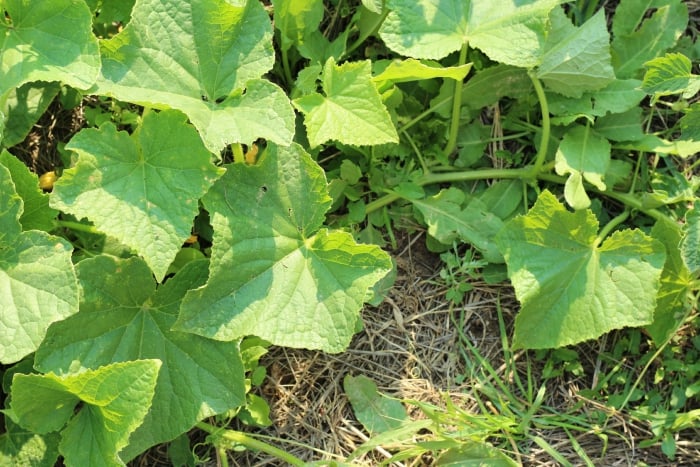
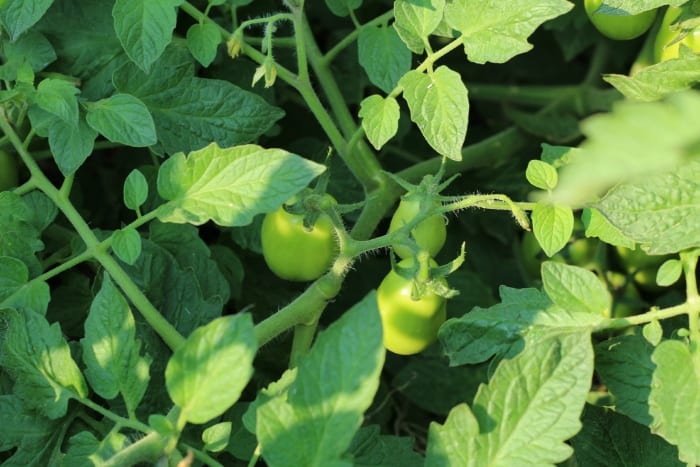
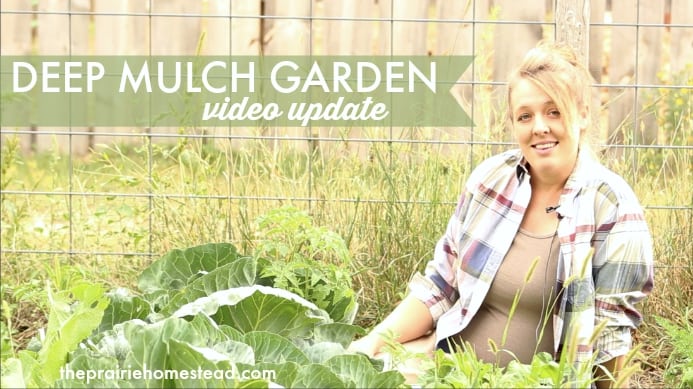
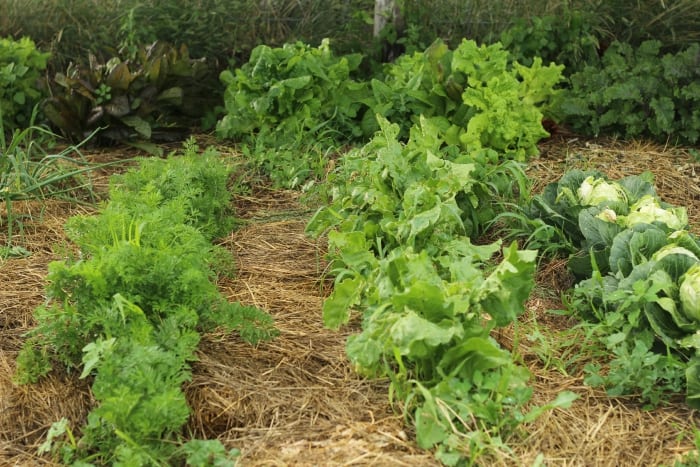
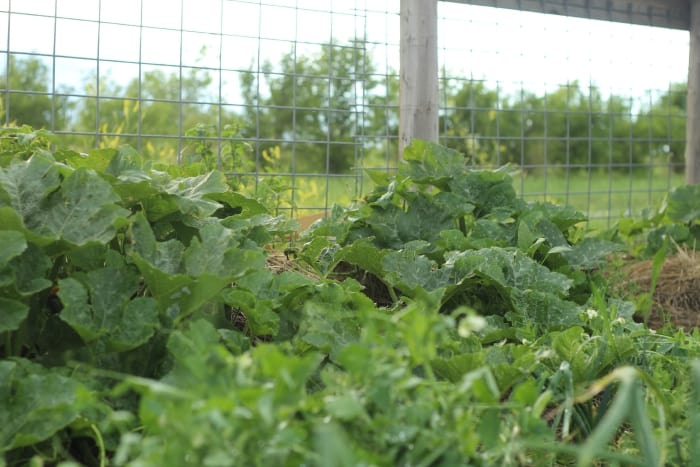
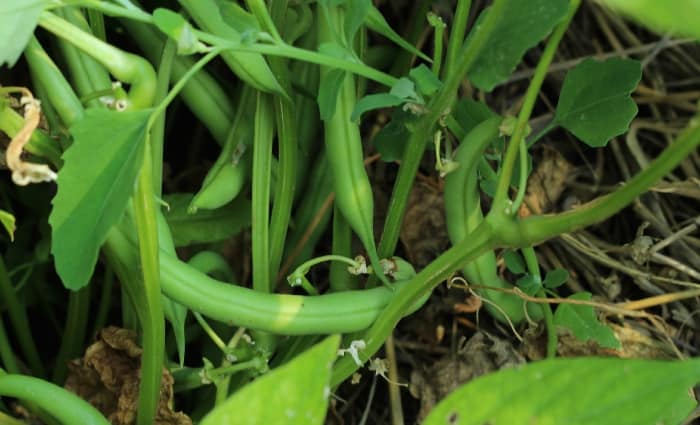
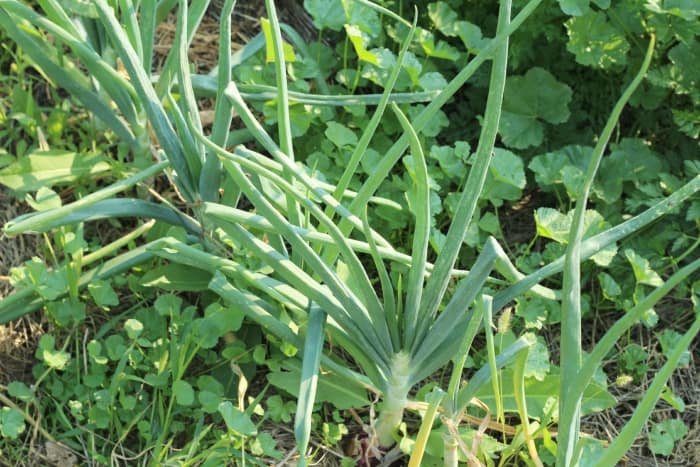
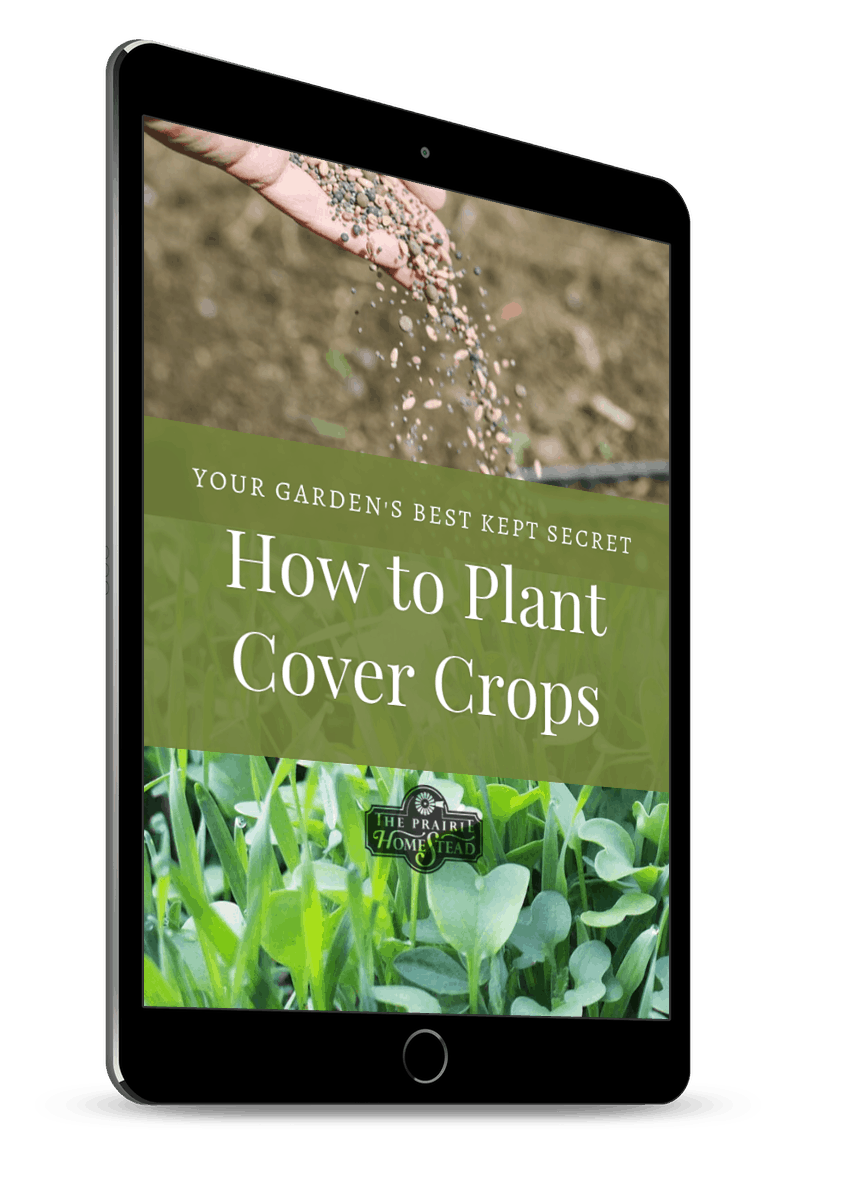
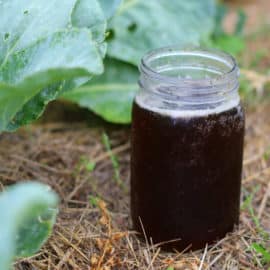
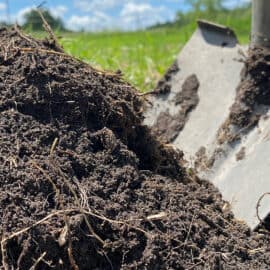
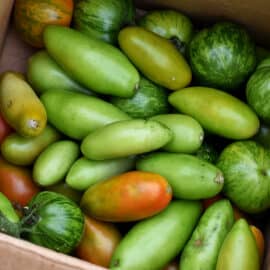
Thanks so much for the update! I have decided to implement deep mulch in my garden this year because I am so frustrated with bare dirt gardening! I have mulched in my little hoop house for the last 4 years and so I know it works! This year I was late getting my hoop house mulched and in years past I would have had a blanket of weeds in there, but because of the past years of mulching I still had very minimal weeds! I was worried about our nasty wind here in the central Nevada desert but if you can do it in Wyoming then I know I can do it here! I am really excited to employ the no tilling also! Thanks for your great blogs and tutorials. I am a fan!
Yes, it’s done well with our crazy WY winds, so I think you’ll be just fine!
great post and video. I did very little mulch in my garden until this year. I injured my back and needed to find a serious way to make my gardening easier- less weeding and watering. This is the trick! However I was glad to see you still had some weeds like me.
Glad to hear it’s working for you!
After giving up on gardening this year after the bindweed(my arch nemesis!) took over, this has given me renewed hope! Is there a way for a current subscriber to get access to it?
Send an email to info(at)theprairiehomestead(dot)com and we’ll get you a copy.
I also tried deep mulch this year for the first time and I am NEVER going back to tilling and little to no mulching. I have had outstanding results due to this method- thanks to your info on it and I also have read Ruth Stout’s No Work Garden Book. Thanks for the update!!
Yay! So glad it’s working for you Sarah!
my one concern about mulching w hay is the potential for seeds in it. How can you avoid that?
If your mulch layer is thick enough, the grass seeds aren’t a problem. Check out the other links in the post for all the details.
did you find that the hay left seeds to sprout? have you used straw for mulch too?
If your mulch layer is thick enough, the grass seeds aren’t a problem. Check out the other links in the post for all the details.
I totally tried this as soon as I read your blog. I am so happy with the results. Like you I didn’t put quite enough mulch down so I did get the weeds as well and will put a much larger layer this fall and next summer. For those with questions about the seeds, I used old horse hay (we have three horses so that is what we had on hand) and I have had no “hay” growing that I can see. I have grass weeds but like Jill mentioned they are super easy to pull out. Thanks Jill, keep up the awesome blog and Homestead toolbox 🙂
What about bugs? I always thought the mulch would be a place for bugs to hide and multiply. Do you have a bug problem (such as squash bugs, cucumber bugs, or cut worms)? Pat B.
I have had bugs this year, but so has everyone else in our area– even folks without mulch. So, it doesn’t seem to be any extra problem.
I needed to plant pumpkins for decorations for a fall wedding. I decided to try mulching after reading your info. The weeds are terrible where I needed to plant in full sun. I was so pleased with the way it worked out. After a couple of weeks I needed to add more hay because the vines were spreading so much. I will definitely do it this way from now on. How do you fertilize next year? Thanks for your great advice. I enjoy your posts.
Hey Dee– so glad it’s working for you! According to Ruth Stout (the queen of mulch who wrote the book who inspired me), you shouldn’t need to fertilize in subsequent years b/c the decomposing mulch does fertilization for you. However, I know there were a few times she mentioned using cottonseed meal as fertilizer. If I get to the point where I think I need an extra boost, I would probably try compost tea, too.
I always say that mulching was the best decision I ever made in my garden. The second best was mulching with wood chips. If you are impressed with your results with hay try adding wood chips to the mix. we always put down a very thick layer, around 4 inches of wood chips in the fall after we put down compost and then the garden is ready to plant in the spring when ever the weather is. all summer we add grass clippings as mulch as I feel it is important to have some variety to your mulch. Thanks for the post I really enjoyed it.
peace
Interesting– so you’re basically layering the wood chips with grass clippings then?
Hello Jill,
You look so cute and pregnant 🙂
Hay mulching in the best! We ripped our front and side lawn and did a permaculture garden this year. I’m going to to do an update video on it too! We have been busy editing wedding videos, so I need to get on it. I plan on munching my garden with hay for winter, but you know we are in the middle of all these fires and it’s really hard to get our hands on hay or straw! We had such a dry summer!
– Abby Jo @ Forgotten Way Farms.com
Aw, thanks. I just mostly feel big and slow right now, ha! Can’t wait to see your videos!
Hi Jill!
I have had Ruth Stout’s book on deep mulch gardening for years but forgot all about it until you first introduced deep mulching in your blog. I have mostly raised beds but also have a couple large areas in my garden without them, and all the weeds to go with it. I immediately went out and deep mulched those areas (free old hay is a wonderful resource from local beef growers here) and have had fantastic results. If there was a better word than fantastic, I would use it 🙂 My green beans were planted late, but the deep mulch saved them from the excessive heat and drought we experienced this year. Yes, we’ve had some crazy weather in the Pacific Northwest too…
I also deep mulched the walkways between the raised beds that were out of control and had great results for weed abatement.
I am so thankful for your blog and all that you share. Keep up the good work! And BTW, your bug bite relief stick/balm is a huge hit, I made some for my entire family and each and every one swears by it now.
Thank you! ???
YAY Michele! I am so happy to hear it’s working for you! And glad the bug bite stick is helpful too– we sure have loved ours this summer!
Oops, the question marks were actually a picture emoji… Peace, love and absolutely Mason jars!
Hi, I heard you talk about this deep mulch gardening and looked into it. I really was impressed with the method and wanted to help us cut down on tilling and weeding. So we did eight inches of straw on our two gardens. We were also doing some remodeling in our house this year and wanted to not have to do as much outside work. We live in Ohio and in June we got rain, rain, rain and then we are into a long dry spell. Well things didn’t work out as we expected. Our tomatoes grew some. The beans didn’t grow very much and other plants didn’t grow very well. Well we have an organic farmer friend and asked if he would look at the gardens and give me some help. He said because of that much straw it was too much carbon and to break down the straw it also needed nitrogen which it pulled from the ground and away from the plants. He told me what I needed to add to get the nitrogen back in the soil but he liked the concept. I also found out from him that since we had so much rain at one time the the soil got depleted of minerals and since we haven’t had a lot of rain since the soil hasn’t been replenished of the minerals. We started making our compost tea to spray on the ground and adding rabbit manure. He also suggested growing comfrey to help replenish the nitrogen. We are working to balance this all out.
Hi Mary Jo– sorry to hear you’re having problems. I haven’t ever heard of this sort of thing (i.e. the straw decomposing so fast it was tying up the nitrogen) with the deep mulch, as long as you aren’t tilling the straw in. However, it might not be a bad idea to have some soil testing done so you can figure out exactly what’s going on.
If one has a big area that is just mainly weeds can you put the mulch down with the same results? We have a small hill that has fruit trees on it, but everything else is weeds. My husband spends hours in the summer weedwacking the yard. Would mulching with hay work or would the hill be a problem? And would it increase mice or other critters? Thanks, Sz
You could– although if the weeds are very thick and tall, you might want to do a layer of cardboard or newspaper first, and then LOTS of hay.
I love this idea. However it didn’t work like I thought it would. Basically no weeds as said, but I had a lot of plants die. Planted 50 ft. Of beans and they all died except 2 ft. I’d say half of my potatoes either died or didn’t come up at all, and the ones that are left look very sickly. Tomatoes aren’t doing that great either. However, the peppers, and all the vining plants are doing great! Melons, squash, ect. My 12 year old son who reads a lot said he read that hay that’s been sprayed can cause problems. I have no idea if my hay was sprayed or not. I never even thought about checking before I got it. I didn’t know hay needed sprayed. It was also a pain to plant a garden in the pokey hay. Has anyone else had a problem with this? Hurt to go barefoot, hurt to kneel, ect. Wasn’t fun at all, and usually where my children are more than happy to help plant the garden, it was like pulling teeth to get them to help this year. Still haven’t decided what I’ll do next year…..
Read what I wrote in my comment. Mary Jo L
That’s so discouraging, Mary Jo. How come no one else is having that problem?
It could be where they live. My brother is having problems with his garden and he isn’t doing the deep mulch. He lives about 5 miles from where I live. The organic farmer said that the deep mulch is a good idea but we need to learn how to balance the soil. I thank God that I know this farmer and I can get good information from him. We are making our own compost tea right now to put on our garden to help feed it. I learned about making compost tea off of YouTube.
Hi Emily,
Sorry you had troubles with your mulch. It definitely sounds like something else might be going on in your soil, or perhaps in the hay like you mentioned. I would definitely recommend trying to source organic hay if possible. I haven’t found the hay to be any more uncomfortable to kneel/walk on than the dirt, though.
Thanks-once again! -for such good information… I just can’t wait until I can put in a garden again. .. I’ve given up on one here in the desert.
I look forward to my Wednesday mornings when I know I can see what’s in Jill’s Toolbox this week!
So glad you’re enjoying the toolbox Debbie!
Hello!
I’ve been doing gardening for 8 yrs and I was introduced to this method 2012-
3 yrs ago and successful have seen the fruit of my labor. Please share with all your peeps via the link below Grab some java, popcorn.. etc… about 1 hour 42 min long but worth every minute to view http://www.backtoedenfilm.com Enjoy!
Yep- the deep mulch method is very similar to the Back to Eden method– it just uses a different mulching material.
This is so encouraging – we live in New Zealand and love reading your blog. We are just ending Winter and coming into Spring and planning to deep mulch. We have lots of rotted hay and have spread this over several of our 10 raised beds to help improve the soil. Would this be too rich for baby plants?
We have quite dry Summers in our area so this deep mulch method looks ideal for helping the soil stay moist and keeping the weeds down is a huge bonus (even though we have seven little weeding girls…)
I think you’ll love it! I would think the hay would be fine– just only spread it on top, don’t till it in. 🙂 Good luck!
Hi Jill,
What kind of watering system do you use in your garden? I live in northwest Colorado and am challenged by many of the same weather issues you have. I currently use soaker hoses which seem to work quite well, but was wondering how you water your garden.
I just use a sprinkler. So pretty basic, but it works!
My husband and I have gardened for many years but this was our first time using the deep mulch system. I am so grateful I discovered your blog early in the spring in time to try this new approach.
I ordered Ruth Stout’s book and read it through very quickly. I then set about to locate the hay I would need. We have a farm so there were two round bales of grass hay that had been baled 5 or 6 years ago but never fed. They were pretty moldy but I convinced my husband to retreive them for the garden.
We were using a brand new garden plot since we just instituted our rotational gardening system. We have two plots – one 65×30 and one 60×45. One is reserved for cover crops and a chicken run. The other is for the vegetables.
Since we were starting a garden on land that has been an alfalfa field or corn field for years, we had to plow. Once plowed we began to plant the vegetables. This was our first mistake. We should have spread the hay THEN planted – especially since the hay was compressed and came apart in moldy layers. We did the best we could to place the chunks of hay around transplants and find the row that had been covered and planted. Next year we will spread hay THEN plant.
We also placed irrigation hose down each row and were able to water the plants easily when needed.
The irrigation system plus the deep mulch just about made for a garden that required NO work except for keeping the mulch up close to the emerging plants. Everything in the garden did beautifully except all the vining plants died before they produced a full crop. I got a few cukes and a few crookneck squash but the vines died early. Same thing with the canteloupe. I don’t know if this was due to the mold in the hay or not. My husband says that was the problem. We will see if that problem persists in future.
Thank you so much for this information. I, too, am a believer and will never go back to tilling.
Sounds like you had a great year of learning experiences and success! And yes, I’ll second the notion of spreading the hay FIRST, then planting. Much easier that way. So glad you had a good year with your mulch, though!